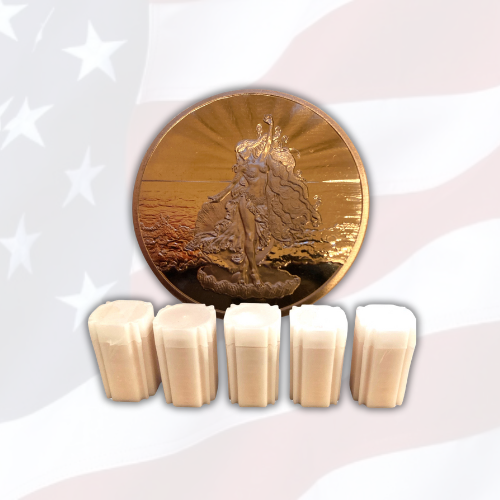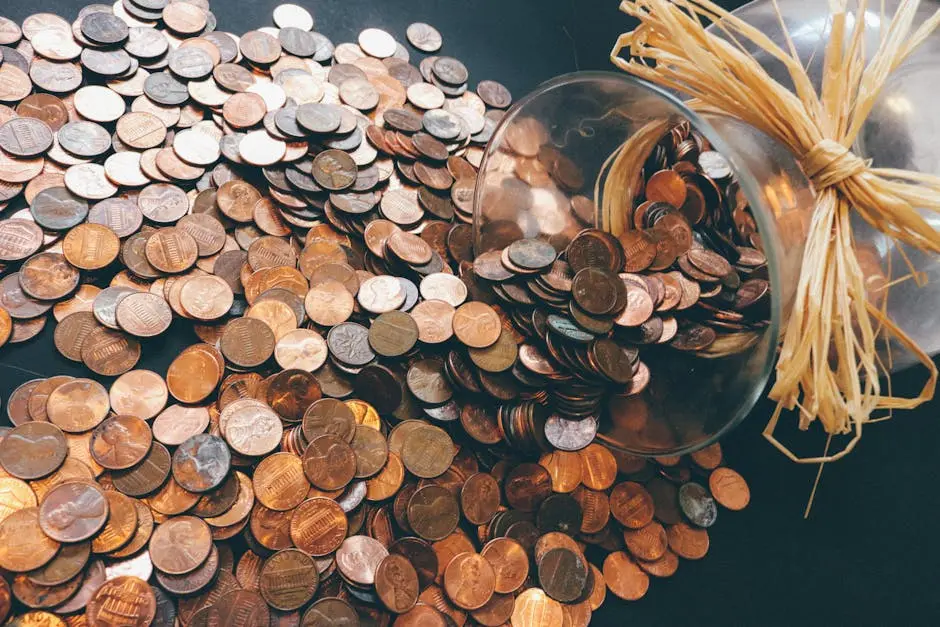Copper, a metal with a rich history, is not only valued for its functional applications but also holds potential as an investment. In this blog, we’ll explore how assembling a copper collection can be a lucrative opportunity for investors, both novice and experienced.
Understanding the Value of Copper
Copper has been a valued material for thousands of years, prized for its conductivity, durability, and versatility in various industries. This section will discuss how its fundamental properties contribute to its value, especially in today’s market.
The metal copper has recently gotten a lot of press as its prices have been soaring on increasing demand, especially in industries like renewable energy and electric vehicles. This heightened demand reflects copper’s intrinsic properties, particularly its excellent electrical conductivity, which makes it an ideal component in modern electrical and electronics systems. Copper’s malleability and ductility also enhance its usability across various applications, from plumbing and roofing to jewelry and decorative arts. As industries innovate and expand globally, the need for copper only appears to increase, accelerating its market value How To Invest In Copper: 5 Ways To Buy And Sell It.
While copper may not be the traditional safe haven like gold or silver, it offers a unique position as a commodity with both functional and aesthetic allure. Historically, copper has been a staple in coinage and art, a material that holds the stories of ancient civilization within its warm amber hues. It provides a dual appeal—not only as a practical asset amidst commodity-driven inflationary pressures but also as a timeless collectible that enthusiasts treasure for its beauty and history. The current momentum in the copper market, driven by both its industrial demand and collectible aspect, suggests that it holds a bright future as both a traditional and modern investment choice.
Collecting Copper: A Beginner’s Guide
Starting a copper collection can be an exciting journey. Here, we will cover the basic steps and considerations for budding collectors, including how to source authentic items and assess the quality and historical significance of each piece.
An excellent first step for aspiring collectors is to understand the categories of copper collectibles available on the market. From copper bars and coins to medals and decorative items, each type of collectible offers unique historical and aesthetic value. For instance, while coins often carry the charm of history and intricate designs, copper bars provide a straightforward way to enter the market, often valued by weight rather than design. Regardless of your interest, staying informed about current market trends and price benchmarks is crucial in making informed purchasing decisions.
To ensure the authenticity and value of the pieces you add to your collection, it is advisable to source them from reputable dealers. Online platforms such as Liberty Copper, APMEX or JM Bullion consistently offer diverse selections and can serve as ideal places to embark on your collector journey. However, don’t overlook local dealers or coin shows, as they provide opportunities to physically inspect the items, which is invaluable when assessing condition and detail. Always verify the credibility of the sources.
An eye for detail is essential when examining potential additions to your collection. Many collectors emphasize the importance of execution in engravings or texture, as well as the patina that naturally forms on copper over time—a trait that can both enhance and diminish an item’s appeal. Understanding the balance between preservation and natural aging is crucial for maintaining the collectible’s potential market value, so familiarizing yourself with techniques and tips for maintaining metals is equally essential.
The Market Trends Shaping Copper Investment
As with any investment, understanding market trends is crucial. This section explores current trends in the copper market, from industrial demand to geopolitical factors, and how these could impact the future value of copper collections.
Copper has recently emerged as a noteworthy investment, thanks in part to ongoing global efforts towards sustainable and decentralized energy sources. As nations transition towards greener economies, the demand for copper, crucial in wiring and related components, is projected to elevate. The electric vehicle (EV) sector alone accounts for a significant surge in copper utilization, as these vehicles require up to four times more copper than conventional automobiles How To Invest In Copper: 5 Ways To Buy And Sell It.
Geopolitical factors cannot be ignored, as copper often finds itself at the center of trade negotiations and tariffs, particularly between major exporters like South America and importers such as China. These macroeconomic dynamics play an influential role in shaping both the short-term and long-term trajectories of copper prices. Consequently, collectors and investors should stay attentive to international developments that could impact the demand and supply chain—information vital for making savvy investment decisions.
Technological advances present another dimension to consider, as innovations in recycling processes aim to reclaim copper from obsolete electronics. However, this can create an unpredictable overhang in supply, potentially causing fluctuations in price. Therefore, while copper presents ripe opportunities given increasing demand, understanding the underlying factors influencing market cycles remains key to making sound investments. Continue exploring market insights through our full article on copper trends for a broader understanding.
Preservation and Maintenance of Copper Collectibles
To ensure the longevity and value of your copper collection, proper care is essential. We’ll go over tips for preserving copper items, from cleaning techniques to storage advice, ensuring they remain in pristine condition.
Proper storage and maintenance are pivotal in ensuring the aesthetic appeal and market value of copper collectibles. Regular cleaning is necessary to preserve the luster and detail in copper pieces, but it requires a delicate approach to prevent abrasions. Utilize a gentle soap and lukewarm water solution for cleaning, avoiding harsh chemicals that could strip the patina and diminish value. After cleaning, always dry immediately with a soft, non-abrasive cloth to ward off moisture.
For long-term storage, controlling the environment that houses your collection is crucial. Humidity accelerates oxidation, so maintaining a dry, controlled climate using silica gel packets within sealed containers can be highly effective. Displaying pieces behind UV-resistant glass further shields them from dust and light exposure that can cause discoloration or fading. Explore our ultimate guide on storing your copper bullion to seamlessly integrate comprehensive storage tactics into your routine.
In cases where your collection involves historical or intricate items, specialized conservation techniques may be warranted. Consulting with professional conservators who understand the nuances of dealing with antiquities can offer vital insights into how best to care for your collection while adhering to industry standards. If you are curious about diving into more specialized techniques, peruse our creative copper jewelry techniques for exceptional ideas.
Evaluating the Investment Risks and Rewards
Every investment comes with its own set of risks and rewards. In this section, we’ll balance the potential financial gains against the risks involved in investing in a copper collection, helping you make informed decisions.
Investing in copper might not guarantee immediate income, unlike dividend-paying stocks or bonds. Nonetheless, it serves as a reliable hedge against market volatility, particularly during inflationary periods when commodities tend to stabilize value. As a tangible asset, it can provide a sense of security amid uncertain economic climates. While traditional savvy investors might favor gold or silver for hedging, copper’s emerging market stature evokes strong diversification attributes How To Invest In Copper: 5 Ways To Buy And Sell It.
However, carrying physical copper does present challenges. Unlike high-value items like diamonds, copper’s dense weight per dollar value necessitates substantial storage space and safekeeping measures to protect your collection. Furthermore, facing the necessity of liquidation during economic emergencies may not always return the expected market price immediately due to fees and broker costs. Recognizing, understanding, and planning for these logistical challenges can help manage potential risks.
To ensure you’re equipped with the right expertise, engaging with specialized advice and services frequently proves beneficial. Consulting investment advisers to tailor your collection and integrating insurance into your investing strategy safeguards against unforeseen losses. This due diligence, coupled with a strong understanding of market fluctuations, positions your copper collection as an invaluable resource in portfolio diversification and wealth preservation. Explore strategies on securing your collections financially and physically by visiting Blogs.
Unveiling the Promise of Copper Collections
Copper collections offer more than just aesthetic appeal; they present a unique investment potential rooted in the metal’s enduring demand and intrinsic value. Whether aiming to diversify your portfolio or simply to indulge in the beauty of copper artifacts, investing in copper can be both rewarding and fascinating.



